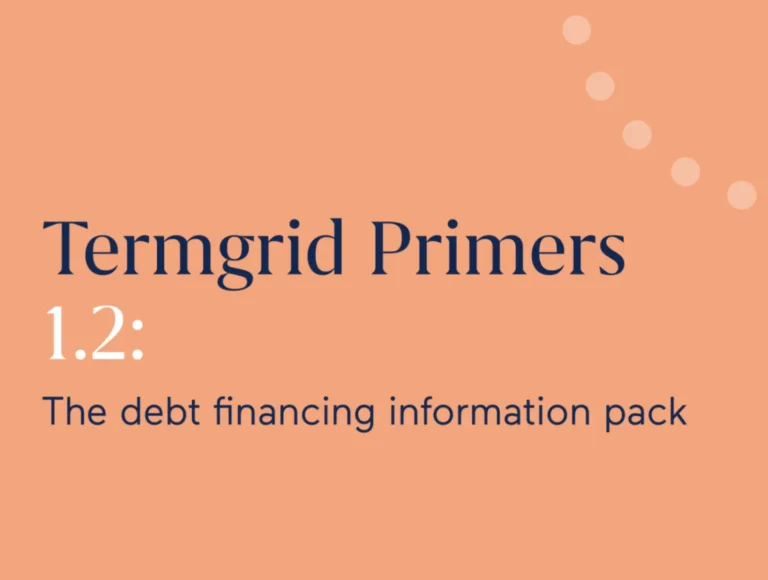What are ARR loans and why have they become so important for private equity?
Origins and definition
Based on a concept said to derive from a revenue based-financing strategy proposed by American entrepreneur, engineer, MIT graduate and investor Arthur Fox to invest in technology companies in the 1980s, ARR loans are loans based on the annual recurring revenue (ARR) of a business.
While traditional loans are typically sized as a multiple of EBITDA — a measure of a company’s operating earnings — ARR structures are particularly useful for earlier-stage or acquisition financing where profitability has not yet been achieved.
An ARR loan is also particularly useful for a business which generates significant revenue and cash flow but wants to put these proceeds back into growth activities like sales, marketing and customer acquisition.
ARR loan investors instead look for reliable and recurring revenues, often generated through sticky customer relationships and reflected in metrics such as customer lifetime value (CLV) and monthly recurring revenue (MRR). These traits are common in Software-as-a-Service (SaaS) and other subscription-based business models. ARR loans are also attractive for companies with significant upfront costs that can scale quickly to profitability.
According to a report from Growth Market Reports, the global recurring revenue loans market reached USD 6.8bn in 2024 and was projected to grow at CAGR of 18.7% from this year until 2033 when it is predicted to reach around USD 37.8bn.
While many ARR loans remain concentrated at the smaller end of the market, scale is increasing rapidly. One of the largest ARR-style financings to close last year was YouLend’s JP Morgan–backed £4 billion (US $5.1 billion) extension of revenue-based financing to small and medium-sized enterprises (SMEs). The transaction highlights how recurring-revenue structures are now being applied beyond traditional software lending, extending into embedded finance and fintech platforms with predictable, high-volume cash flows.
In the U.S., similar momentum has been driven by private credit funds deploying large recurring-revenue facilities to back major software take-privates. Recent examples include the US $2 billion ARR loan used in Francisco Partners and TPG’s acquisition of New Relic, and Vista Equity Partners’ US $1.2 billion Pluralsight recapitalization, both structured around recurring-revenue metrics rather than EBITDA. Earlier landmark deals such as Thoma Bravo’s US $1.8 billion Medallia financing helped establish the template for these transactions.
Together, these deals show how ARR-style structures are evolving from a niche growth-financing tool into a mainstream private-credit product that can support both early-stage fintech platforms and multi-billion-dollar enterprise software buyouts. They also underline the increasing willingness of private lenders to anchor transactions that traditional banks might find difficult to underwrite on EBITDA terms alone.
ARR loan calculation and implementation
While a lender might, for example, offer to lend between three and twelve times a business’s monthly recurring revenue, the revenue calculation used for an ARR loan will often depend on what is most appropriate for the business concerned.
Much like EBITDA, ARR can be calculated on a rolling 12-month basis or from an annualized figure based off the most recent quarter or the most recent month. But as annualized figures on a shorter period are more sensitive to performance and quicker to highlight issues in a business they may be seen as less appropriate for a business which is subject to seasonal volatility.
There are also nuances on what might constitute recurring revenue. While maintenance, consultancy or service fees that are not paid on a subscription basis are usually excluded from ARR calculations, some loans may include specific rules requiring licence revenue to be recognised as ratable over the life of the licence or consistency between revenue recognition and the sponsor model.
ARR loan agreements will also typically have a liquidity covenant because of lenders’ focus on the cash reserves in the early stages of a business. The company will need to show it has sufficient cash reserves to weather any unexpected dip in performance and carry the cost of any necessary redundancies or restructuring.
Payment-in-kind (PIK) toggles, allowing borrowers to choose between paying interest in cash or deferring the amount by adding it to the loan principal, are another common feature of ARR loans owing to the scarcity of cash during the initial periods of growth for which the loans are often used.
The ARR leverage test on the loan will usually change to an EBITDA leverage test two to three years after closing thus keeping the business to its projections of turning a substantial profit at this point. Borrowers may also decide to make this change to access the margin ratchet, pay dividends and get other flexibilities. It may at this point also be easier for them to meet an EBITDA leverage test than continue to grow revenue at the rate set by the ARR covenant.
ARR loan use now and in the future
Unsurprisingly, smaller ARR loans often involve a single lender with conservative terms, financial maintenance covenants and little negotiation. Bigger ARR loans of, for example, between US$100m and US$1bn tend to be sponsor-driven and can secure friendlier terms.
The structure offers flexibility and a way to avoid dilution of equity but typically involves higher interest rates and additional fees. Performance-based covenants requiring a business to meet specific financial targets may also restrict its operation and failing to meet them could lead to penalties or default.
That said, ARR loans are often more quickly approved than traditional bank loans and in contrast to venture capital allow access to capital without giving up equity and therefore control.
More data-driven lending is likely to allow companies to access more funding based on their actual performance while more specialist lenders providing finance for specific sectors may help companies which have previously had difficulty with traditional financing.
Sources:
Hogan Lovells: https://www.hoganlovells.com/en/publications/the-rise-of-arr-financings
Latham & Watkins / Reuters: https://www.lw.com/admin/upload/SiteAttachments/Practical-Law-Recurring-Revenue-Loans-Key-Considerations-for-Market-Participants.pdf
HubFi: https://www.hubifi.com/blog/arr-funding-guide
Stay in touch with all of our latest updates and articles. Sign up now.



